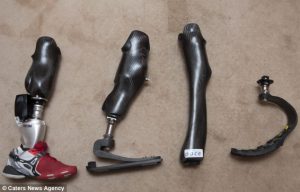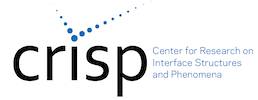
Students will design a prosthetic device. Students will apply knowledge of human arm/hand anatomy and biomechanics to design, build, and test a hand prosthetic using standard office items. Students will collaborate to decide which combination of materials meet design requirements and generate a prosthetic that is able to grasp, lift, and release akin to the hand. Educators are encouraged to develop extension classroom activities based on supporting content provided in this module.
Subject(s):
Biotechnology, Properties of Materials. Technology and Society
Objectives:
- Students will be able to:
- Execute and explain the Engineering Design Process:
- Identify a need
- Research the problem
- Design a solution
- Build, test, and evaluate a prototype
- Communicate the solution
- Troubleshoot and redesign
- Design and build a model prosthesis that can perform similar functions to the human hand
- Recognize design constraints and critically assess design solutions
Materials in this kit:
- Cardboard boxes
- Elastic bands
- Wood pencils
- Binder clips
- Masking tape
- Film ribbon
- Pipe cleaners
- Paper clips
- Straws
- Scissors
Any other inexpensive basic office or paper materials.
Suggestions for the Teacher:
Students should have a foundational understanding of arm/hand anatomy and biomechanics. Basic skills in geometry and algebra coupled with an understanding of physics principles of motion will aid in the successful construction of a model prosthetic hand.
Safety:
Additional Resources:
Designing Prosthetic Devices Teacher Module
Designing Prosthetic Devices CRISP aligned standards
Prosthetic Student Sheet
Engineering, Go For it! Lesson: Build a Prosthetic Device http://teachers.egfi-k12.org/lesson-build-a-prosthetic-device/
Pearson Education, Inc. Project STEM. Designing Prosthetic Devices. http://www.pearsonschool.com/index.cfm?locator=PS14Kt&PMDbProgramID=80564
Rochester Institute of Technology Traveling Engineering Activity Kits (T.E.AK.) Biomedical Engineering Kit:
The Biomechanical Hand and Joint http://edge.rit.edu/content/TEAK-O/public/kit%20documents/Bio%20Kits/Biomechanical%20Joint/Joint_LessonPlan.pdf
STEM Careers:
Bio-engineer
Biomedical Engineer
Bio-mechanical Engineer
Manufacturing Technician
Mechanical Engineer
Occupational Therapist
Orthotist
Physical Therapist
Prosthetist
Research & Development Scientist
Standards:
MS-ETS1-2
- Evaluate competing design solutions using a systematic process to determine how well they meet the criteria and constraints of the problem.
HS-ETS1-3
- Evaluate a solution to a complex real-world problem based on prioritized criteria and trade-offs that account for a range of constraints, including cost, safety, reliability, and aesthetics as well as possible social, cultural, and environmental impacts.
MS-PS1-3
- Gather and make sense of information to describe that synthetic materials come from natural resources and impact society.
MS-ETS1-1
- Define the criteria and constraints of a design problem with sufficient precision to ensure a successful solution, taking into account relevant scientific principles and potential impacts on people and the natural environment that may limit possible solutions.
MS-ETS1-3
- Analyze data from tests to determine similarities and differences among several design solution to identify the best characteristics of each that can be combined into a new solution to better meet criteria for success.
MS-EST1-4
- Develop a model to generate data for iterative testing and modification of a proposed object, tool, or process such that an optimal design can be achieved.
HS-ETS1-1
- Analyze a major global challenge to specify qualitative and quantitative criteria and constraints for solutions that account for societal needs and wants.
HS-ETS1-2
- Design a solution to a complex real-world problem by breaking it down into smaller, more manageable problems that can be solved through engineering.
HS-ETS1-4
- Use a computer simulation to model the impact of proposed solutions to a complex real-world problem with numerous criteria and constraints on interactions within and between systems relevant to the problem.
CC-4: Systems and System Models
- Models (e.g., physical, mathematical, computer models) can be used to simulate systems and interactions—including energy, matter, and information flows— within and between systems at different scales. (HS-ETS1-4)
CC-2: Cause and Effect
New technologies can have deep impacts on society and the environment, including some that were not anticipated. Analysis of costs and benefits is a critical aspect of decisions about technology. (HS-ETS1-1) (HS-ETS1-3)
SEP 2- Developing and Using Models
- Asking questions (for science) and defining problems (for engineering)
Constructing explanations (for science) and designing solutions (for engineering)
